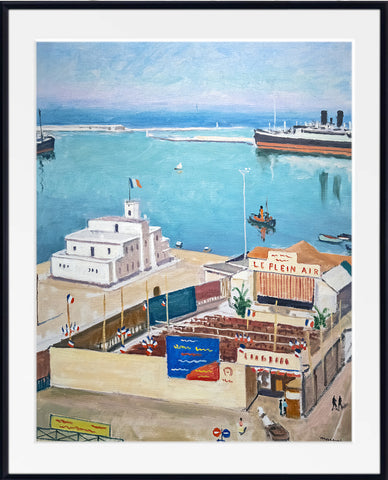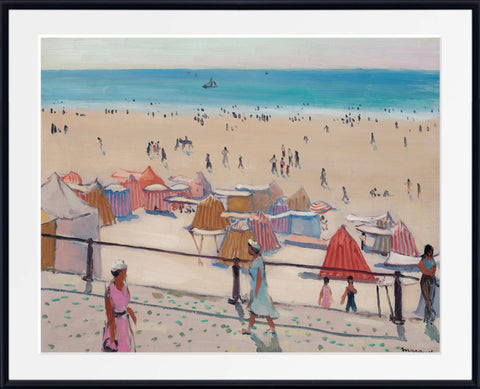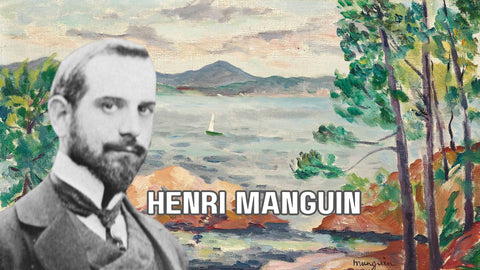Table of Contents:[hide]
Albert Marquet, a prominent figure in the world of French painting, left an indelible mark on the art scene of the early 20th century. From his association with the Fauve movement to his later transition into a more naturalistic style, Marquet's journey as an artist is a fascinating exploration of color, light, and perspective.
A Glimpse into Marquet's Life and Work
Born on March 27, 1875, in Bordeaux, Marquet's artistic journey began with his move to Paris in 1890 to pursue studies at the École des Arts Decoratifs. It was there that he crossed paths with Henri Matisse, igniting a friendship that would shape both their artistic trajectories. Under the tutelage of Gustave Moreau at the École des Beaux-Arts, Marquet honed his skills, eventually exhibiting his paintings at the Salon des Indépendants.
Marquet's early works bore the hallmarks of Fauvism, characterized by vivid colors and bold brushstrokes. Alongside Matisse, he explored pure colors and light, garnering attention within the Parisian artistic community. However, Marquet's approach to Fauvism was more subdued, favoring muted tones over the intense hues of his contemporaries.
The Evolution of Marquet's Style
As Marquet's career progressed, he began to diverge from the vibrant palette of Fauvism towards a more naturalistic approach. His landscapes, rendered with a delicate balance of light and shadow, captured the essence of his surroundings with a subtle yet captivating charm. Unlike Matisse's bold use of color, Marquet opted for subdued tones, employing grayscale to evoke depth and atmosphere in his compositions.
One notable aspect of Marquet's work is his exploration of urban landscapes, particularly his series of city views alongside Matisse. While Matisse favored vibrant colors, Marquet's depictions were characterized by muted hues, often accentuated by stark contrasts of light and shadow. His mastery of traditional perspective, coupled with his unique color palette, lent his cityscapes a sense of quiet elegance.
Marquet's Oeuvre: From Europe to North Africa
Throughout his career, Marquet embarked on numerous voyages across Europe and North Africa, drawing inspiration from the diverse landscapes he encountered. From the bustling streets of Paris to the tranquil shores of Venice, Marquet's paintings captured the essence of each locale with remarkable clarity. His depictions of the sea, in particular, exhibit a keen understanding of light and motion, conveying a sense of serene beauty.
Among his favorite subjects were the cities of Algiers, Naples, and Venice, each offering a unique interplay of light and color. Marquet's technique, reminiscent of the Impressionists yet distinctly his own, transformed mundane scenes into moments of quiet contemplation. His ability to capture the essence of a place with economy of brushstrokes is a testament to his skill as a painter.
Marquet's Enduring Legacy
Despite his untimely death on June 14, 1947, Marquet's legacy endures through his timeless artworks. His influence extended beyond the shores of France, inspiring artists such as John McLean and Leland Bell in America. Marquet's unique blend of Fauvism and naturalism continues to captivate audiences worldwide, reminding us of the enduring power of art to transcend time and place.
In conclusion, Albert Marquet's artistic journey serves as a testament to the transformative power of color, light, and perspective. From his early experiments with Fauvism to his later explorations of naturalistic landscapes, Marquet's oeuvre remains a source of inspiration for artists and art enthusiasts alike.
Albert Marquet FAQ's
-
Who was Albert Marquet?
- Albert Marquet (1875–1947) was a French painter known for his contributions to the Fauvist movement and later for his naturalistic landscapes.
-
What is Fauvism, and how was Marquet associated with it?
- Fauvism was an early 20th-century art movement characterized by vivid colors and bold brushwork. Marquet was associated with Fauvism through his friendship with Henri Matisse and his early experimentation with pure colors and light.
-
What influenced Marquet's artistic style?
- Marquet was influenced by various artistic movements, including Fauvism, Impressionism, and Japanese Shijo style. He also drew inspiration from the landscapes and cityscapes he encountered during his travels across Europe and North Africa.
-
How did Marquet's style evolve over time?
- Marquet's style evolved from the vibrant palette of Fauvism to a more naturalistic approach characterized by subdued tones and delicate brushwork. He became known for his mastery of light and shadow, particularly in his landscapes and city views.
-
What were some of Marquet's favorite subjects to paint?
- Marquet frequently painted landscapes, cityscapes, and seascapes, drawing inspiration from locations such as Paris, Algiers, Naples, and Venice. He was particularly drawn to scenes featuring water, capturing its movement and luminosity with remarkable skill.
-
Did Marquet paint portraits or other genres besides landscapes?
- While Marquet primarily focused on landscapes later in his career, he also painted portraits and explored other genres, including nudes and city scenes. His versatility as an artist allowed him to experiment with various subjects and styles throughout his life.
-
What is Marquet's legacy in the art world?
- Marquet's legacy lies in his unique blend of Fauvism and naturalism, as well as his mastery of color, light, and perspective. His influence extended beyond his contemporaries, inspiring artists both in France and abroad, and his artworks continue to captivate audiences in museums and galleries worldwide.
-
Where can I view Albert Marquet's paintings?
- Albert Marquet's paintings can be found in museums and galleries around the world, including the Musée National d'Art Moderne in Paris, the Metropolitan Museum of Art in New York, and the Musée des Beaux-Arts de Bordeaux, among others.
-
Was Marquet's work appreciated during his lifetime?
- While Marquet received recognition within the artistic community during his lifetime, his true appreciation grew in the years following his death. Today, he is celebrated as a pioneering figure in modern art, admired for his innovative techniques and timeless compositions.
-
What sets Albert Marquet apart from other artists of his time?
- Albert Marquet's ability to capture the essence of a scene with simplicity and elegance distinguishes him from his contemporaries. His mastery of color and light, combined with his distinctive style, ensure his enduring legacy in the annals of art history.
Albert Marquet Prints and Canvas Panels
Fine art prints and ready to hang gallery quality canvas panels of Albert Marquet paintings are available in a range of sizes with fast worldwide delivery.






